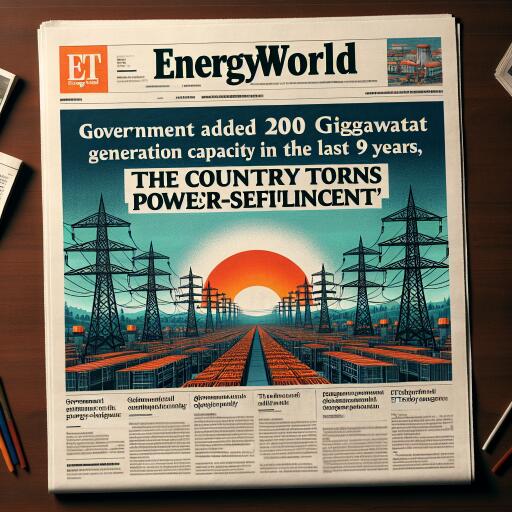
India Achieves Power Sufficiency with Monumental 200 GW Capacity Increase Over Nine Years
In a significant stride towards energy independence, India has marked a pivotal transition from being power-deficient to achieving power sufficiency. This transformation is credited to the colossal addition of approximately 200 gigawatts (GW) to its electricity generation capacity over the last nine years, disclosed Union Minister R K Singh.
During the inauguration of the esteemed industry event ELECRAMA, Singh elaborated on the comprehensive efforts that have been instrumental in revolutionizing India’s power sector. “The entire nation is now interconnected through a unified grid, boasting the capacity to transfer 116,000 MW of electricity across different regions. These advancements are laying the groundwork for India’s bright and robust energy future,” articulated Singh.
The occasion also served as a platform for the Indian Electrical & Electronics Manufacturers’ Association (IEEMA) to unveil the 16th edition of ELECRAMA. Poised as the globe’s preeminent electrical exhibition, ELECRAMA 2025 is set to unfold in New Delhi from February 22-26, under the banner “Reimagining Energy for Sustainable Future.” This initiative seeks to pioneer discussions and collaborations aimed at fostering a sustainable and resilient energy landscape.
This landmark event promises to congregate industry magnates, policymakers, and stakeholders, creating an opportune milieu for unveiling and debating the latest innovations, trends, and solutions pivotal for the sector’s advancement. Vikram Gandotra, IEEMA Vice President, shared his enthusiasm for the upcoming edition of ELECRAMA, forecasting business inquiries to the tune of USD 20 billion. Furthermore, the event anticipates the attendance of representatives from over 100 countries and will feature more than 10 dedicated country pavilions, emphasizing its global scale and significance.
The strides made in the Indian power sector not only exemplify the country’s commitment to securing its energy needs but also reflect a broader agenda for sustainable development. The augmentation of 200 GW in electricity generation and the establishment of a nation-wide grid represents a milestone in India’s journey towards self-reliance and environmental stewardship. As India continues to pave its path forward, initiatives like ELECRAMA 2025 underscore the pivotal role of innovation and international cooperation in achieving a greener future.





Leave a Reply